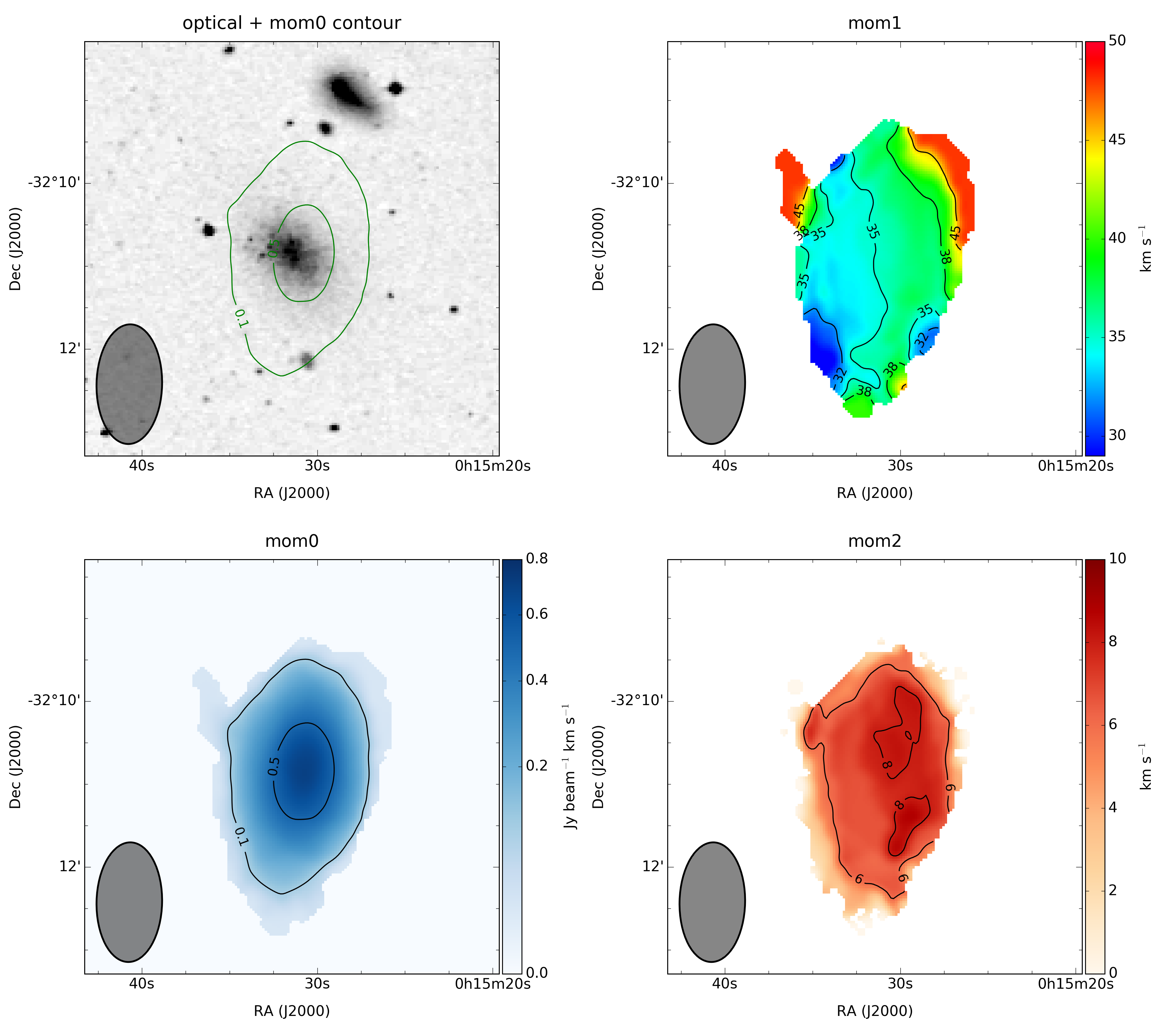ESO 410-G005

ESO 410-G005 (HIPASS
J0015-32) is a dwarf galaxy at TRGB distance of 1.92 ± 0.19 Mpc
(Karachentsev et al. 2000). Its stellar morphology resembles that of a dwarf
elliptical, while our HI detections at vhel = 20 - 52 km/s, both
with the Parkes telescope and the ATCA, suggest that it is most likely a
transition-type dwarf galaxy. No HI emission was detected with the ATCA
at velocities around +160 km/s where Bouchard et al. (2005) report a detection
using the Parkes telescope. Using our ATCA HI data we determine a center
position of α,δ(J2000) = 00:15:30.9, -32:10:52, an HI diameter
of 1.5 arcmin × 1.0 arcmin (840 pc × 560 pc), PA = 320 degr,
a systemic velocity of vsys = 36 ± 2 km/s (vLG =
53 km/s) and a 50% (20%) velocity width of 22.8 km/s (31.3 km/s). Furthermore,
we measure FHI = 0.93 Jy km/s, corresponding to an HI mass of
8 × 105 M☉. We calculate an HI mass-to-light
ratio (MHI / LB) = 0.22
M☉/L☉. The ATCA HI velocity field shows a
gradient perpendicular to the stellar disc, similar to that discussed for
ESO 349-G031. High resolution ATCA HI images
indicate the HI emission is offset from the optical centre, located on both
sides of the minor axis. It is unclear if the gas is rotating or being
accreted/ejected. If the observed velocity gradient is due to rotation
(vrot = 15 km/s) we calculate Mdyn = 2 ×
107 M☉.
Reference:
Koribalski et al. 2018
* LVHIS database
* LVHIS homepage
* next